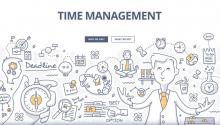In the early 1900s Henry Ford pioneered mass production of automobiles. He divided the roles of workers so that they each specialized in one aspect of production, thus increasing productivity and lowering costs.
Similarly, companies now seek to bring efficiencies to their lead management and sales processes. The purpose is to close more deals faster and more cost-effectively. Just as Ford used specialization on the manufacturing floor, sales and marketing leaders are learning the value divvying up sales roles to achieve higher revenues.
There are two reasons why narrowly defining your sales roles can increase your success. First, each sales associate is empowered to become an expert in their more focused position. Second, different sales functions require unique skills and personality characteristics. If you split up the responsibilities, you can hire people who are most likely to succeed in each specialty.










